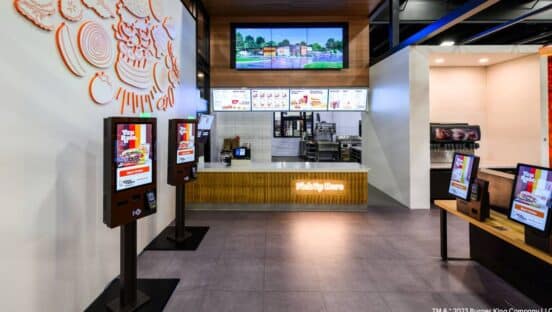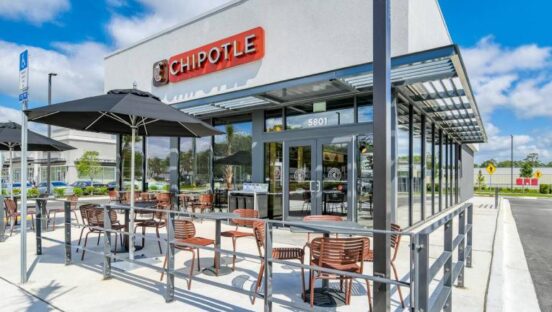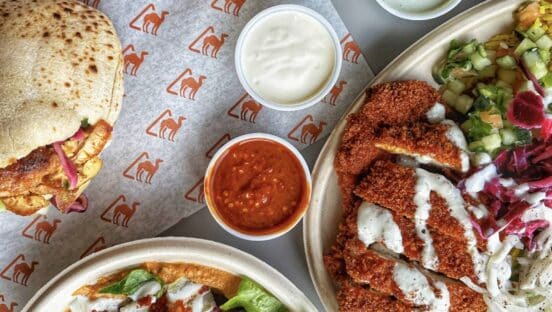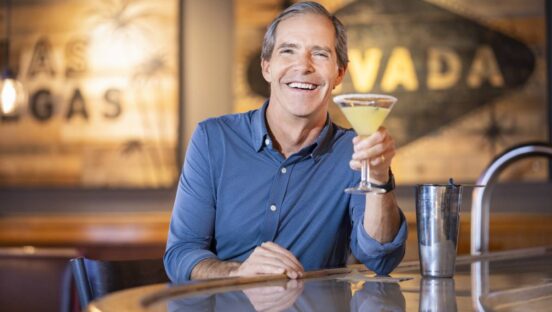Demographics are destiny. It’s a sentiment that’s been hotly contested in recent years, and applied to everything from a shifting political landscape to social mobility (or the lack thereof).
But for businesses and other for-profit enterprises, demographics are a different—albeit no less complicated—consideration.
How a population changes over time is inextricably linked to how a company will fare. The information revolution has made knowledge of those changes even more accessible and precise, allowing businesses to take even more control of their destinies.
But, in an era when cultures blend and people are more connected than ever before, the census boxes are becoming a bit outdated. Why study a consumer by their gender, age, and ethnicity when they can be grouped by certain behaviors and habits?
The right way forward isn’t as clear-cut as it used to be. Operators are finding success not by following a one-size-fits-all formula, but rather by taking myriad approaches to understanding their guests.
Proof is in the patterns
In the for-profit world, where attempts to curry favor with certain consumer groups could be misconstrued as profiling, businesses are not eager to claim they target certain ethnic or socioeconomic demographics. But other metrics, like age, geography, and life stage, are fair game. As anyone in the foodservice world can attest, there’s been no shortage of brands pandering to millennials, and now the proceeding Gen Z as well.
“Typically the fast-casual community targets a young professionals demographic in many respects,” says Greg Schulson, president and CEO of Burrito Beach. He adds that despite the industry’s infatuation with millennials, fast casuals extol values that span generations and other groups. “The tenets of fast-casual concepts are still around food quality and quality of ingredients and unique menu items. What we’re finding is that that appeals to a broader range of the population than what we originally anticipated.” The six-unit Chicago brand has built a loyal following across a diverse group of people, Schulson adds—not just with millennials.
Doug Roth, founder and president of restaurant consulting firm Playground Hospitality, says brands should not try to be all things to all people. In fact, homing in on a certain customer demographic can open up the business to a broader consumer base; he likens this phenomenon to a wave.
“You don’t necessarily build all things for all people,” he says. “Basically, good food and good branding are going to appeal to everyone. Everyone wants to be part of a wave.” To that point, Roth says that just because he’s not a millennial doesn’t mean he wouldn’t visit a restaurant that caters to that age group.
If fledgling concepts are going to focus on any particular customer segment, young adults are a good place to start. According to a study by Deloitte, 52 percent of consumers aged 18–34 prefer “evolving value drivers” like wellness, transparency, social impact, and experience, while 48 percent lean toward traditional drivers such as price and convenience. Perhaps more surprising is that those figures remain the same for consumers ages 35–49 and then only shift a single percentage point for ages 50–80.
In fact, the largest disparity between traditional and evolving value drivers lies in gender, wherein 56 percent of women but only 45 percent of men were driven by those newer values.
“I think sometimes women set the tone for what men ultimately do. … Healthy is more women-oriented,” Roth says. “If [a concept] is more salad-oriented and lighter, you’re going to start with women first, but the men will follow.”
Another sizable gap comes at income levels. Of individuals earning less than $25,000 per year, only 44 percent choose evolving value drivers over traditional ones, but the percentage ticks up to 56 for those earning more than $100,000.
Alex Susskind is an associate professor in the School of Hotel Administration at Cornell University and studies trends in the food-and-beverage industry. He points out that while fast casual is not as costly as, say, fine dining, it can price out consumers.
“Once you get into the lower income brackets, people are very price-sensitive. Twelve dollars for a lunch where you met the pig that you’re eating is not as appealing,” Susskind says. He adds that the so-called value meals still have a place among consumers in higher income brackets, too. Susskind says he still loves McDonald’s; he’s not passionate about the food, per se, but he regularly purchases it—especially with his kids in tow. “I don’t think anyone goes to McDonald’s and says, ‘Wow, where did the potatoes for those french fries come from?’” he adds.
Indeed, quick service is still well entrenched in the habits of American families, regardless of their income level or ethnic group. But as the population becomes more diverse, so does the palate. For example, Schulson says he came of age eating hamburgers, but his kids grew up on Mexican fare, and he sees that as part of a larger trend—not just because of the family connection to Burrito Beach.
An inclusive strategy
By the year 2055, the U.S. will have no single racial or ethnic majority, according to projections from the Pew Research Center. Understanding these population shifts presents a unique opportunity to businesses, and some have already begun outreach efforts within growing communities.
Two years ago, California-based Jack in the Box aired a number of TV ads that were entirely in Spanish. The commercials had the same screwball sense of humor as the English-language ones, but spoke directly to a key demographic. Such efforts are paying off; in a recent poll by Mintel, Hispanic (as well as Asian) consumers frequented Jack in the Box more than twice as much as white or African-American customers.
Another brand taking a proactively inclusive approach is Chicago-based Epic Burger. The fast casual makes a point to serve groups and communities that might otherwise be ignored through what it calls its “micro-demographic” strategy. Its Beyond Burger caters to vegans, while its late-night hours bring in younger, party-going crowds. Neither of these is particular groundbreaking, but where Epic Burger breaks the mold is in its outreach to the Muslim community.
In recent years, this religious minority has found itself increasingly in the crosshairs of aggressive political discourse, making it a somewhat tricky consumer set for businesses to overtly pursue. After all, why go after a group under fire when you could just pluck the low-hanging fruit that are millennials?
“Everybody is chasing the same bright, shiny object, which is millennials. While we think we have great brand appeal for that demographic, we have to go fishing beyond the reef,” says Epic Burger founder and CEO David Friedman. “Since this new political climate that we’re in, I haven’t liked the rhetoric that I’ve heard around Muslims and Muslim bans. I feel like they are a society that’s being ostracized. … I want them to know they are welcome at our business, and we value them as human beings and as customers.” He adds that the greater Chicago area is home to roughly 400,000 Muslims.
Since opening in 2008, Epic Burger has prided itself as “a more mindful burger” with an emphasis on high-quality, non-processed meats. It didn’t seem too far of a leap to develop a burger that complied with halal standards. Similar to kosher, halal denotes certain dietary restrictions, with a particular emphasis on slaughter methods. In addition to sourcing considerations, Epic Burger staff were trained in the proper handling and preparation techniques.
Friedman also built inroads to the Muslim community by visiting local mosques and centers and even meeting with clerics. “They have been a fantastic customer for us. They are very appreciative of our business and what we’re providing,” he says.
Instead of kowtowing to dry statistics, Epic Burger imbues this micro-demographic strategy with a deeper social message. The brand attracts vegans, vegetarians, and the sustainably minded with its Beyond Burger that features Beyond Meat, which bills itself as so realistic that the products even “bleed.”
It might seem counterintuitive (or even bad for business) that a burger concept would align itself with a plant-based alternative, but Friedman doesn’t mind. A foodservice veteran with 30-plus years in the industry and a degree from the Culinary Institute of America, Friedman is well aware of the environmental toll associated with livestock farming. So while vegetarians and vegans are appreciative of the special attention, he’s also hoping to win over members of the meat-eating crowd, too.
Epic Burger’s outreach approach is less about demographic data and more about anecdotal evidence—or even gut feel. “This is not consumer research; these are not things that we carefully calculate. These are just things that are obvious to us,” Friedman says. He’ll notice groups whose needs are not being met and go after them. It can be as significant as welcoming a marginalized group or as light as keeping some locations open until 4 a.m. to serve bar hoppers and night owls.
Schulson says Burrito Beach doesn’t zoom in on any particular group because it appeals across demographics. “You’ve just got to give people what they want. It doesn’t matter who they are or where they’re from,” he says. “The reality is we have a very broad base of customers. We’re very proud of it frankly. That’s how you survive when you’re a small to midsize company.”
That’s not to say major chains have a limited subset of customers in mind. Chick-fil-A, long known for chicken sandwiches, fries, and thick milkshakes, has a winning playbook, but the brand is still eager to bring new customers into the fold. It has added better-for-you options like the Superfood Side (made with kale, dried cranberries, and slivered almonds) and the Egg White Grill breakfast sandwich.
“We are committed to serving fast food our customers can feel good about eating, and we think this approach is timeless,” says Leslie Neslage, senior consultant of menu development at Chick-fil-A, via email. “That said, the chefs, food scientists, and nutritionists in our test kitchen work every day to not only develop new recipes to meet changing preferences, but to also update our existing menu items with cleaner, simpler ingredients.”
In fact, the brand beats many competitors in terms of universal appeal. Of the fast-food chains included in Mintel’s consumer poll, only Chick-fil-A scored equal visitation among men and women; visits from male consumers outnumbered those from women at the other brands. Furthermore, nearly twice as many Gen Z consumers had visited Chick-fil-A (33 percent) in the last month, compared to competitor KFC (17 percent). The brand’s popularity with younger consumers is no accident, as Chick-fil-A has closely watched their eating habits.
“Like everyone, millennials and Generation Z are busier than ever and are looking for options and convenience,” Neslage says, adding that the company is constantly updating its mobile app, Chick-fil-A One, to fit on-the-go lifestyles. “Younger customers want more options and more unique flavors on the menu. Therefore, we are adding new options made with simple ingredients, like the Superfood Side, the Spicy Southwest Salad, and our Sweet and Spicy Sriracha Dipping Sauce.”
Habits over boxes
Of course, major brands like Chick-fil-A have resources to focus on various consumer slices. Historically, the same cannot be said for mom-and-pop independents and small chains, but new advances in big data are granting smaller companies access to coveted consumer insights. Masses of unfettered data are even making traditional demographics something of a relic.
At least that’s the case for Cava. In spring 2015, the Mediterranean-inspired fast casual hired Josh Patchus as chief data scientist. While chief information officer has become a common position at many larger businesses, “data scientist” is still something of an outlier. Nevertheless, the work Patchus does is becoming increasingly mainstream.
Near-real-time metrics—collected from the point of sale, social media, customer relationship management systems, and other sources—are synthesized to paint a richer picture of customers. To that end, Patchus does not turn to demographics to better serve customers; he looks to the data points.
“If you take it from more of an e-commerce platform, you’re more concerned about the person’s habits rather than their demographics,” he says. “Before we had large data and before we had ways of collecting it, demographics were a good proxy for these, but if you’re just using demographics, you’re behind the times. We like to look at purchasing behavior, spending habits. Those kinds of things are usually way more predictive of somebody’s future habits than just their gender or general age.”
Patchus adds that there are two general types of consumers, namely existing and potential. For Cava, the focus is on capturing repeat visits, and for this reason, the brand wants to become more familiar with those individuals: their menu preferences, visit frequency, etc. Through these details, the brand can parse out its own customer groups.
“Personalization does much better when you can understand the customer at an individual level and not at a demographic level. Demographic levels are a very good blanket marketing strategy, but it’s not very personal,” Patchus says. “You see [personalization] with Netflix; you see it with Amazon. You see it with the companies that are doing very well right now.”
Cava might not use traditional demographics, but that’s not to say its customers do not follow certain paradigms. Millennials and younger customers are more likely to share feedback via social media than older generations like baby boomers, Patchus says. Similarly, West Coast consumers are even fonder of healthy foods than their East Coast brethren.
Patchus estimates that bigger, more established chains might be a bit behind on the personalization front, but in all likelihood they are working to catch up. He adds that this new approach would bring them to a “2.0” marketing level.
If that does come to pass, the industry as a whole may outgrow conventional metrics like demographics as a means to engage its customer base. The one blind spot for real-time insights? The distant future. Demographers look at decades and centuries; data scientists look at months and years.
“If you’re worried about 10 years, you’ll lose sight of the five years and that’s probably a lot more important,” Patchus says, adding that even precise demographic projections mostly assume preferences remain static.
The genuine article
Brands with less than 100 units, such as Cava, can benefit from a more responsive, real-time approach, while the McDonald’s of the world might have more trouble implementing such a strategy.
Burrito Beach’s Schulson thinks it can also be more difficult for established chains to capture new customers.
“For larger, more mature brands that have been communicating messages for long periods of time, they have been put in a position where certain demographics focus on their brands. For them, maybe [demographic data] is helpful because it’s more difficult for them to attract somebody new to their brand,” he says.
The intersection for the fast-food titans, tech-savvy upstarts, and locally minded micro chains rests not in how they glean information, but rather how they employ it to the benefit of guests.
Like Schulson, Epic Burger’s Friedman says the key to success rests in how genuine a business is in its efforts to bring in a specific group.
“If you’re authentic, if your aim is true, and if your intentions are kind, you don’t have anything to worry about,” Friedman says. “When you appeal to a group that’s not used to being appealed to, there is an appreciation level that you don’t get from the general population.”













